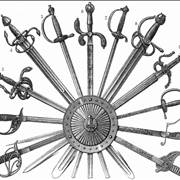

In Middle-earth Weapons of power įurther information: List of weapons and armour in Middle-earth Swords had two attributes which made them especially highly prized: they were costly to manufacture, and effective as weapons. The historian of arms Ewart Oakeshott described the sword as having "a potent mystique which sets it above any other man-made object".

A sword-blade could be adorned with runes these might attach power, history, and magic spells to the weapon, just as Sigurd was instructed to engrave runes of wisdom and victory on his sword Gram. Swords may be heirlooms within a royal family, or may be recovered from ancient hoards of treasure, in either case having a lineage and story of their own. In Norse mythology, similarly, a sword may shine like the sun, as in the Poetic Edda: " Surt from the south comes / With flickering flame Shines from his sword / The Val-god’s sun." So bright in his enemies' eyes that it gave light like thirty torches, and therewith he drove them back and killed many people. So bryght in his enemyes eyen that it gaf light lyke thirty torchys, and therwith he put hem on bak and slew moche peple".

They might have magical powers: Excalibur shines For example, Nægling is repeatedly described with epithets such as "sharp", "gleaming", "bright", "mighty", and "strong", while its history is explicitly recalled in phrases such as "excellent ancient sword", "ancient heirloom", and "old and grey". Such weapons were praised both for their strength and for their history. The runic inscription has been interpreted as reading right-to-left Oh Þurmuþ, "Thurmuth owns me", the swastika standing for " Thor". The name, writes the Tolkien scholar Janet Brennan Croft, "marks a weapon as an heirloom tying generations together and legitimizing the heir who holds it." Some 200 sword names are recorded in medieval writings, in line with the Norse practice of naming objects in stories, such as the Dwarf-made chain Gleipnir that unbreakably fastened Fenris the giant wolf. The case is different in the stories and myths of medieval Northern Europe, where the name of a weapon, especially of a sword, gave it an identity, almost a personality. He does not name the crucial bow of Odysseus: the weapon that allows him to demonstrate his own identity, his own name as he returns home to Ithaca, functions anonymously in the story. Heroic literature did not always name its weapons in ancient Greece, Homer describes the shield and spear of Achilles in detail but does not give them names. Among the major tales are those of Sigurd the Volsung and his sword Gram that he used to kill the dragon Fafnir Beowulf and the swords Hrunting and Nægling King Arthur's Excalibur, the "Sword in the Stone" Roland's Durendal Waldere's Mimming and the Elder Edda 's account of the " Waking of Angantyr" (the Hervararkviða) and the sword Tyrfing. The name, lineage, and power of the weapon reflected on the hero. In Medieval epics, heroes gave names to their weapons. These include their inheritance as heirlooms, sometimes royal their rediscovery in ancient treasure-hoards their being broken and reforged their adornment with runic inscriptions and their interlinking with the lives of their owners.īackground Naming of Medieval weapons There are multiple parallels between Tolkien's usage of named weapons in his Middle-earth writings, and the Medieval epics. Such weapons carry powerful symbolism, embodying the identity and ancestry of their owners. He derived the naming of weapons from his knowledge of Medieval times the practice is found in Norse mythology and in the Old English poem Beowulf.Īmong the many weapons named by Tolkien are Orcrist and Glamdring in The Hobbit, and Narsil / Andúril in The Lord of the Rings. The naming of weapons in Middle-earth is the giving of names to swords and other powerful weapons in J. 1908 illustration by Joseph Ratcliffe Skelton Beowulf fights the dragon with the sword Nægling.


 0 kommentar(er)
0 kommentar(er)
